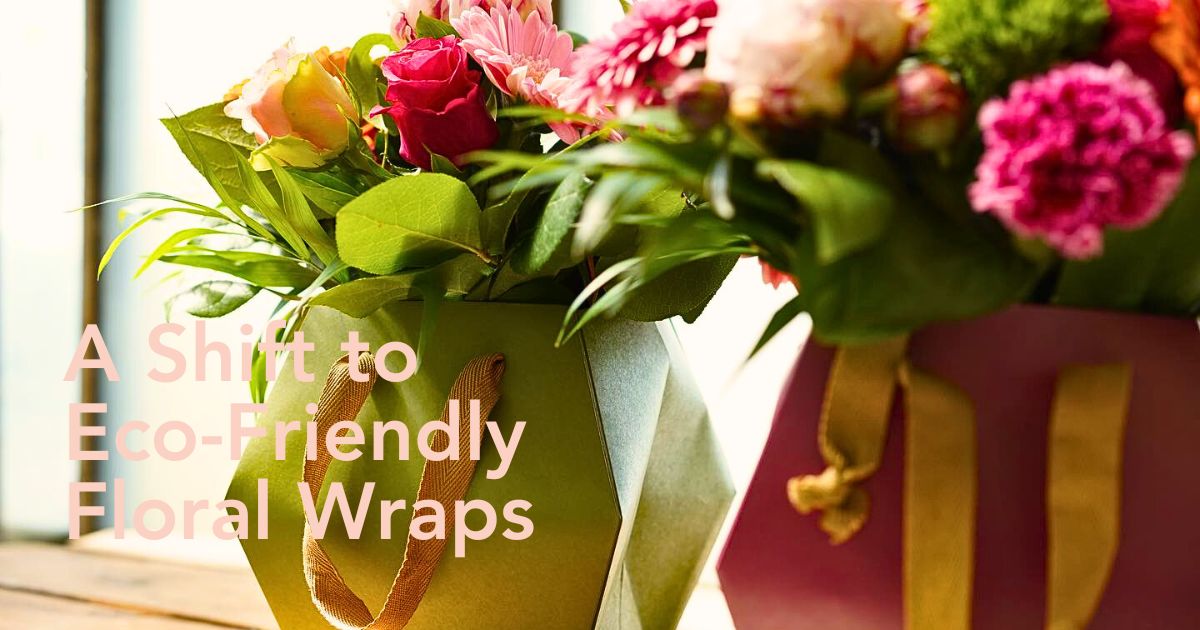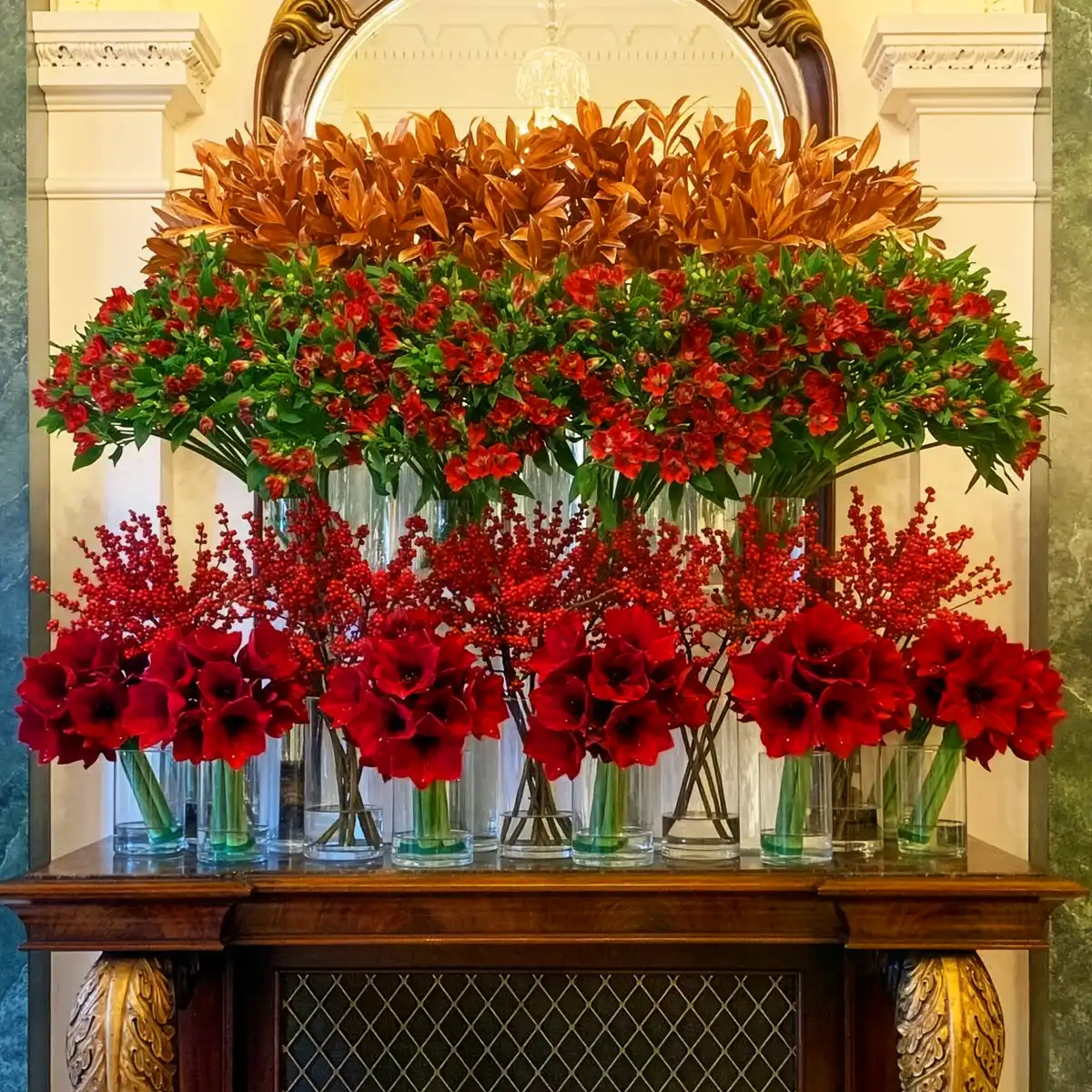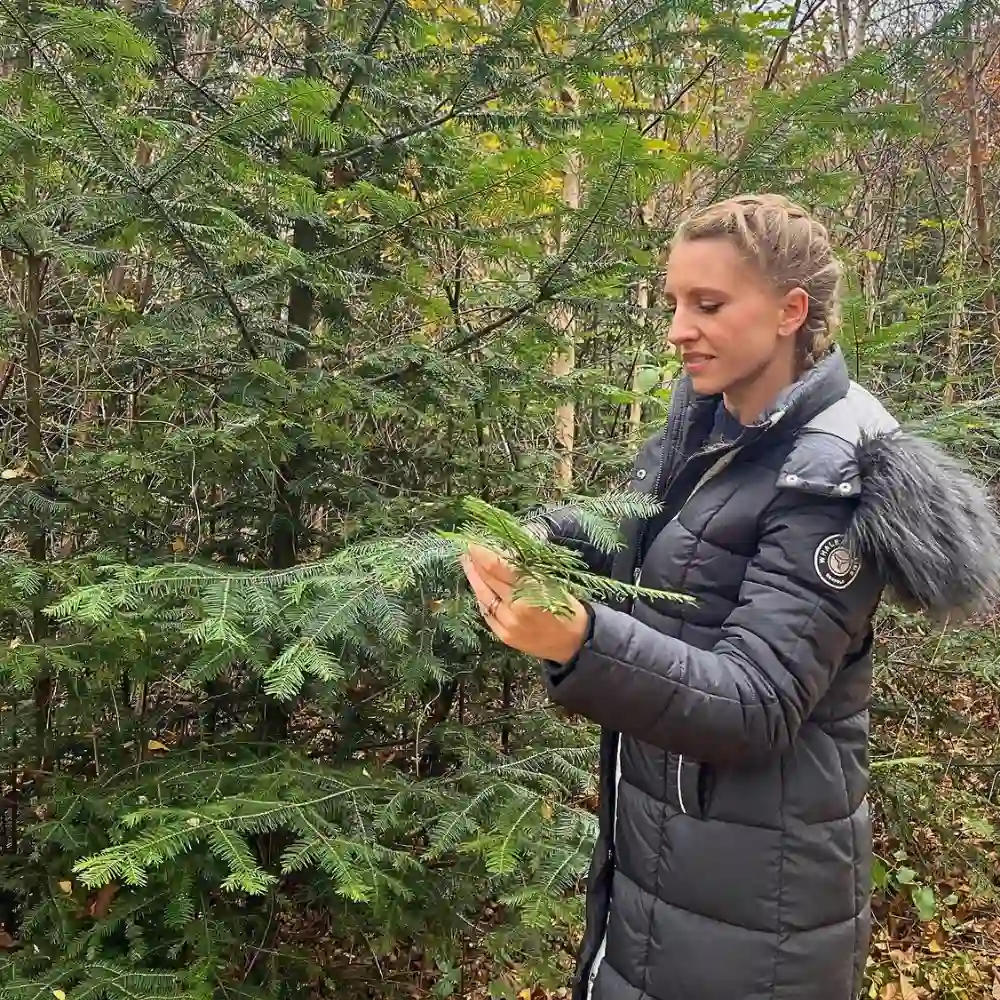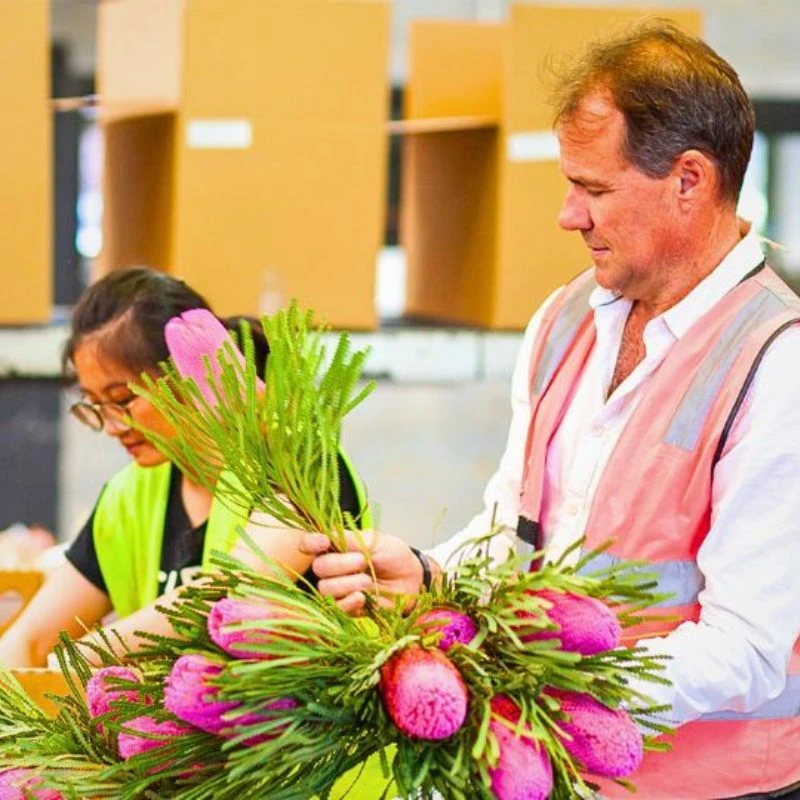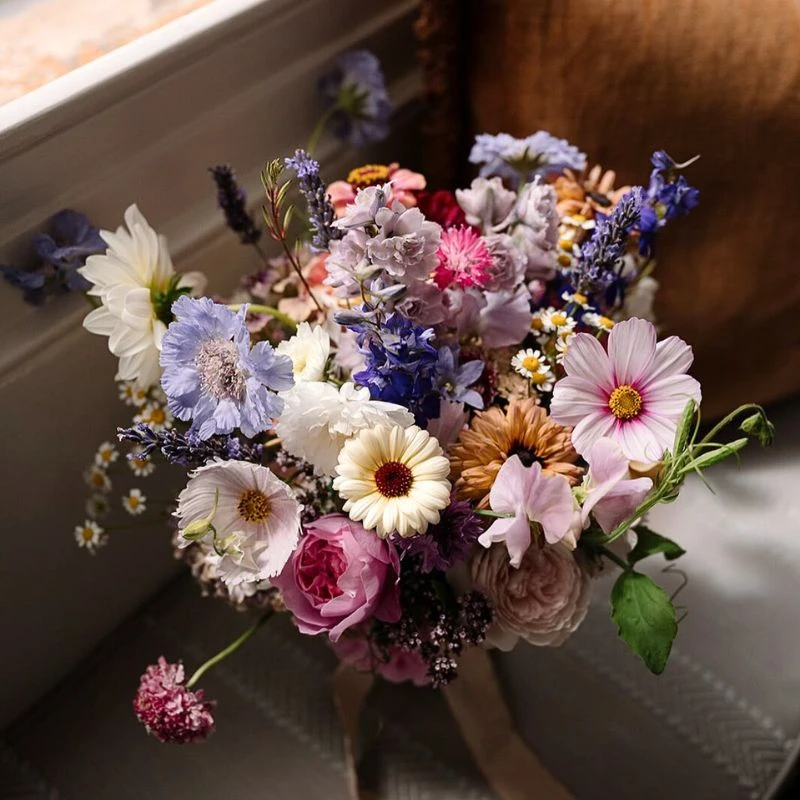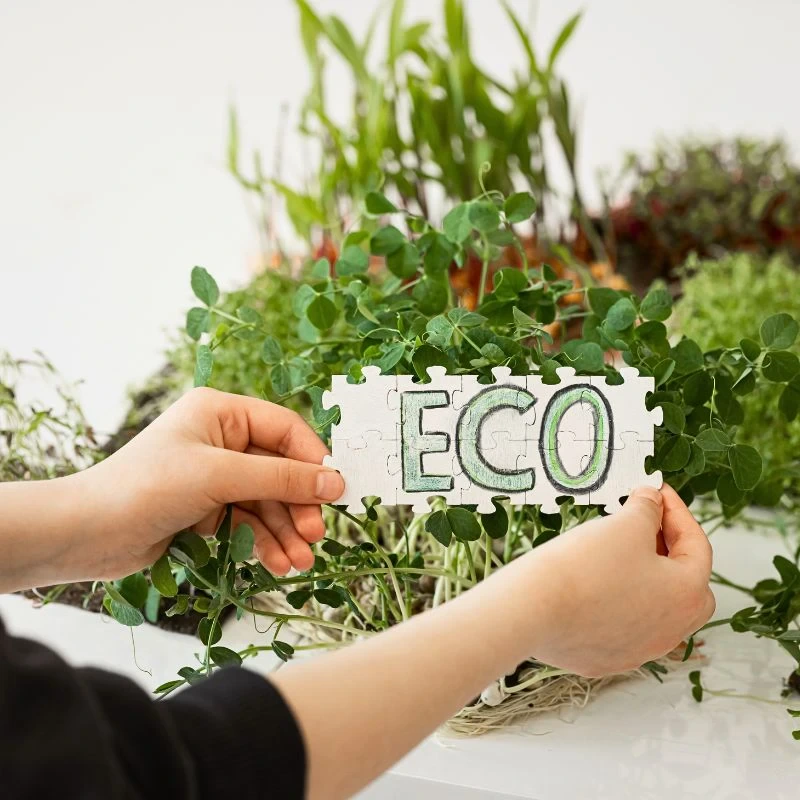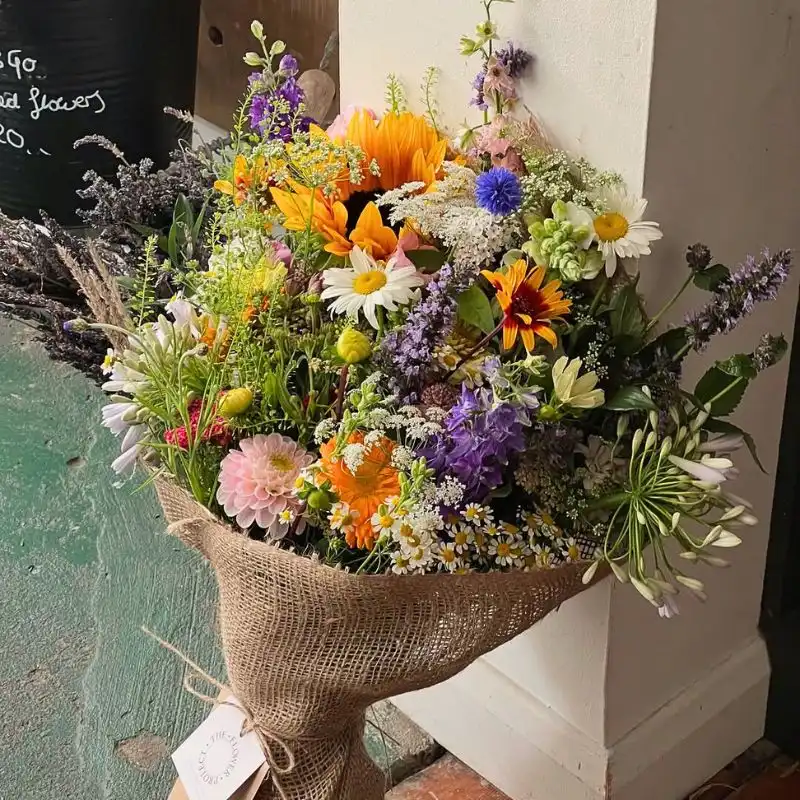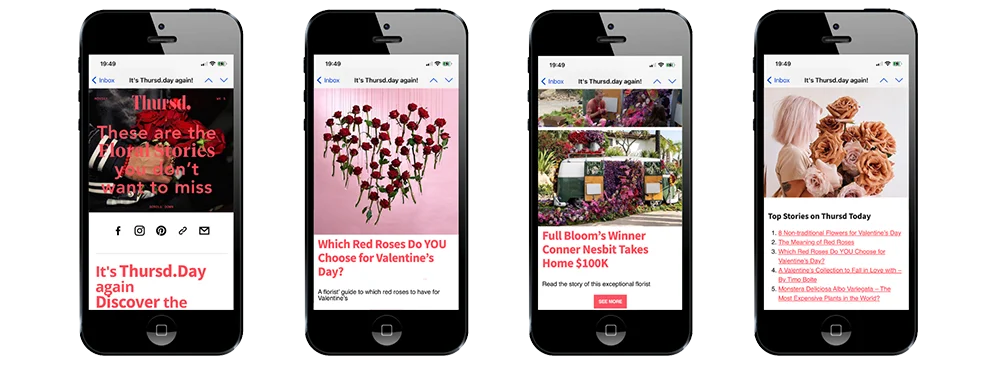While the global flower industry is, on the one hand, synonymous with beauty and aesthetics, behind the exquisite bouquets produced, on the other hand, lies a less picturesque reality: the environmental toll of traditional packaging. From plastic wraps to non-recyclable floral foam, the industry generates significant waste, contributing to pollution and resource depletion.
Yet, as consumer awareness and regulatory pressures mount, a need for sustainable packaging emerges. The flower industry, as a result, finds itself at a crossroads: reimagining packaging systems that traditionally relied on plastic films, non-recyclable wraps, and petroleum-based foams. This is not just about aesthetics but also about changing how growers, retailers, suppliers, and florists reconcile floral beauty with ecological obligation.
The Plastic Predicament: Environmental Concerns on Traditional Flower Packaging
Conventional flower packaging relies heavily on single-use plastics, including cellophane sleeves, polypropylene ribbons, and polystyrene foam (often used in shipping boxes), and for decades, the flower industry's reliance on these single-use plastics has created an environmental paradox—the packaging designed to protect nature's beauty ultimately contributing to its degradation.
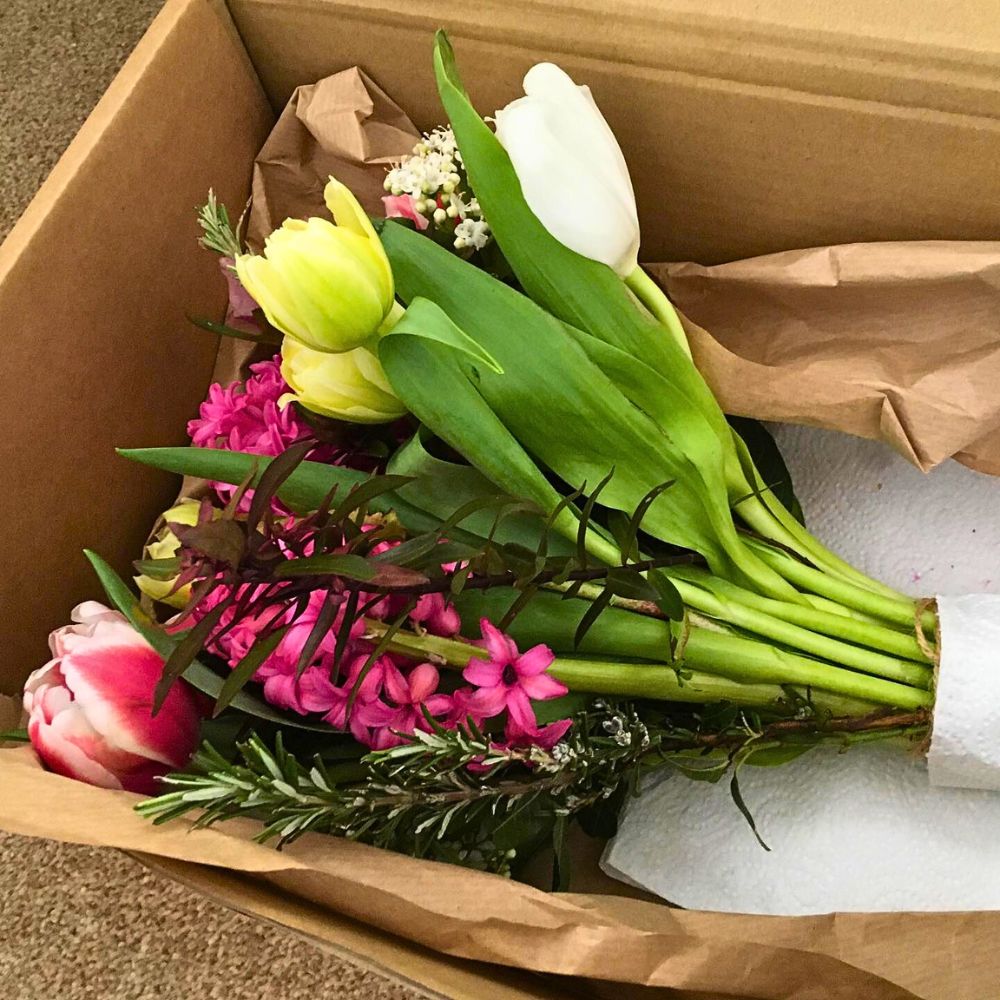
Traditional floral wraps contain up to 80% plastic content, with the average bouquet generating vast amounts of non-recyclable waste. Hydration systems, also, rely on polystyrene foams that could persist in landfills for hundreds of years, while the simple plastic ribbon waste, also, accounts for a significant portion of non-recyclable floral packaging waste.
The carbon footprint involved extends beyond waste. Producing plastic packaging consumes fossil fuels and water, while transportation of heavy, non-recyclable materials amplifies emissions. The linear ‘take-make-dispose’ model (also known as the take-make-waste economy, which is a system where resources are extracted to make products that eventually end up as waste and are thrown away) has plastic at its core and is unsustainable prompting urgent calls for change.
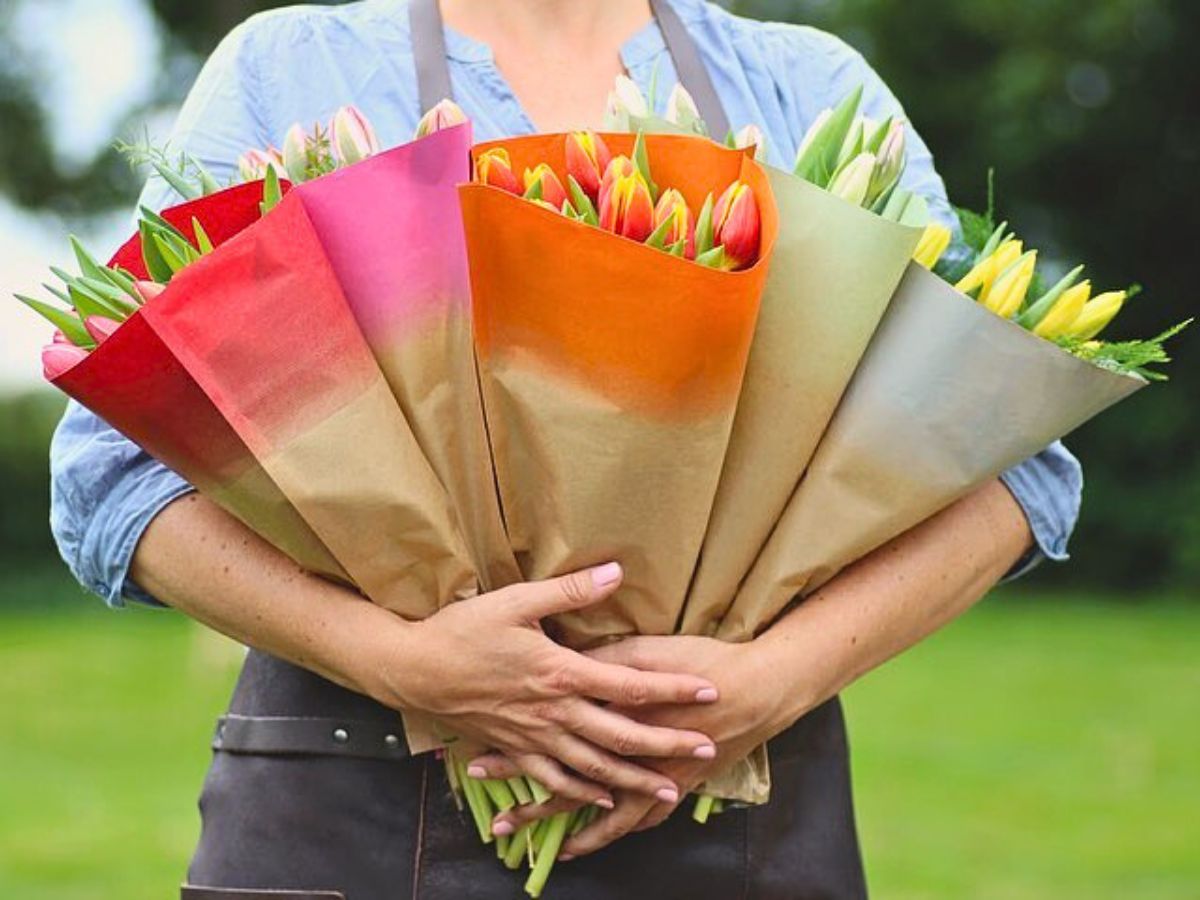
So dire has this ecological burden been that it sparked regulatory action. The European Union's Single-Use Plastics Directive banned specific plastic packaging components by 2023. Simultaneously, consumer surveys revealed that more than 70% of flower buyers would pay premium prices for sustainably packaged arrangements, creating commercial incentives for change.
What Is Sustainable Packaging in Floriculture?
Sustainable packaging in the floriculture industry prioritizes materials and designs that minimize environmental harm. Key principles herein include biodegradability or composability, which is all about materials that decompose naturally without toxic residues. It, also, is about recyclability or reusability, with a focus on packaging that can be reprocessed or reused multiple times.
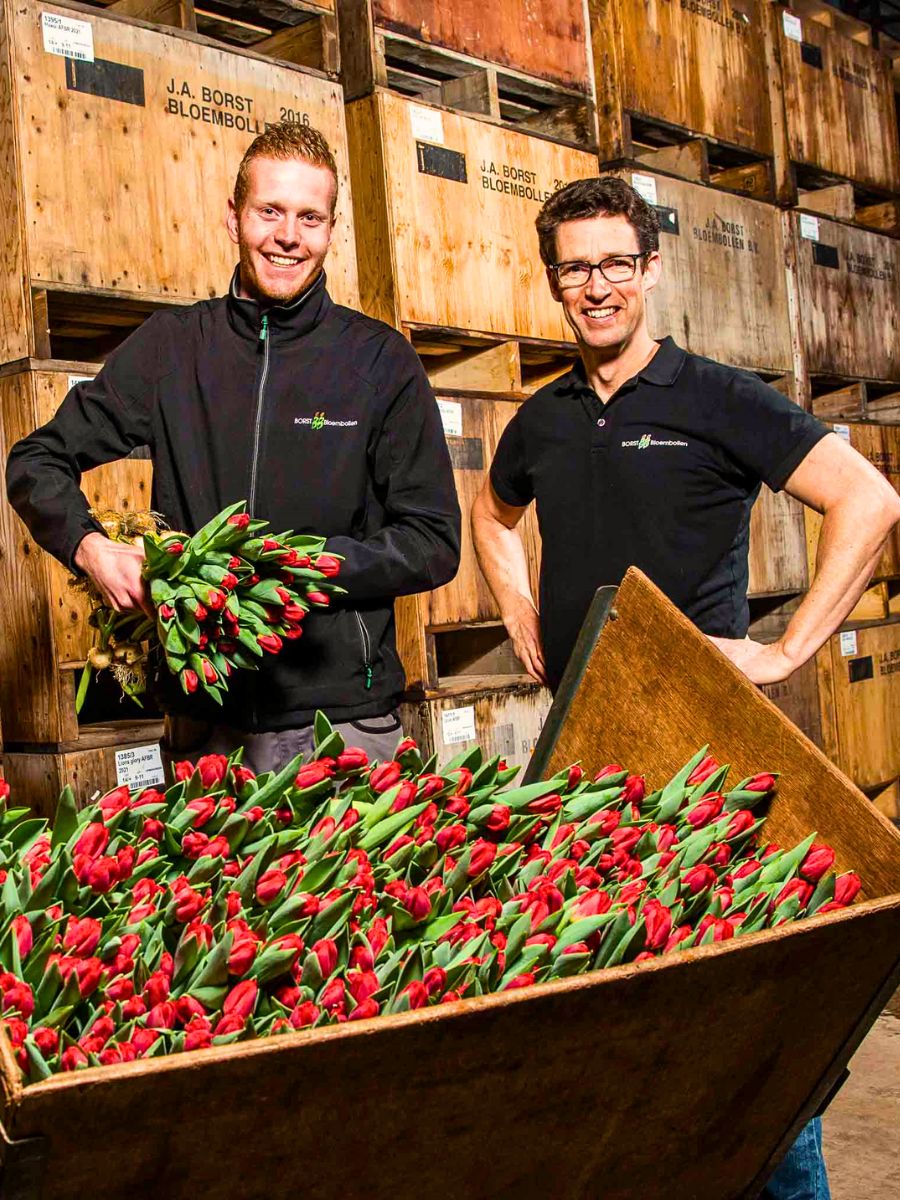
Furthermore, the idea incorporates renewable sourcing; using plant-based or recycled inputs instead of finite resources, as well as materials that have a low carbon footprint in terms of production and transport processes that reduce emissions. These ideologies guide innovations like biodegradable wraps, reusable crates, and plant-based adhesives, ensuring that packaging supports—rather than strains—the planet.
The Need for Sustainable Floral Packaging
Sustainable packaging is an essential aspect of a package's life cycle, covering sourcing, development, manufacturing, use, and disposal. It aims to minimize environmental impact and footprint throughout these stages. In the flower industry, sustainable packaging is crucial for protecting the health of the earth, the environment, and the people involved.
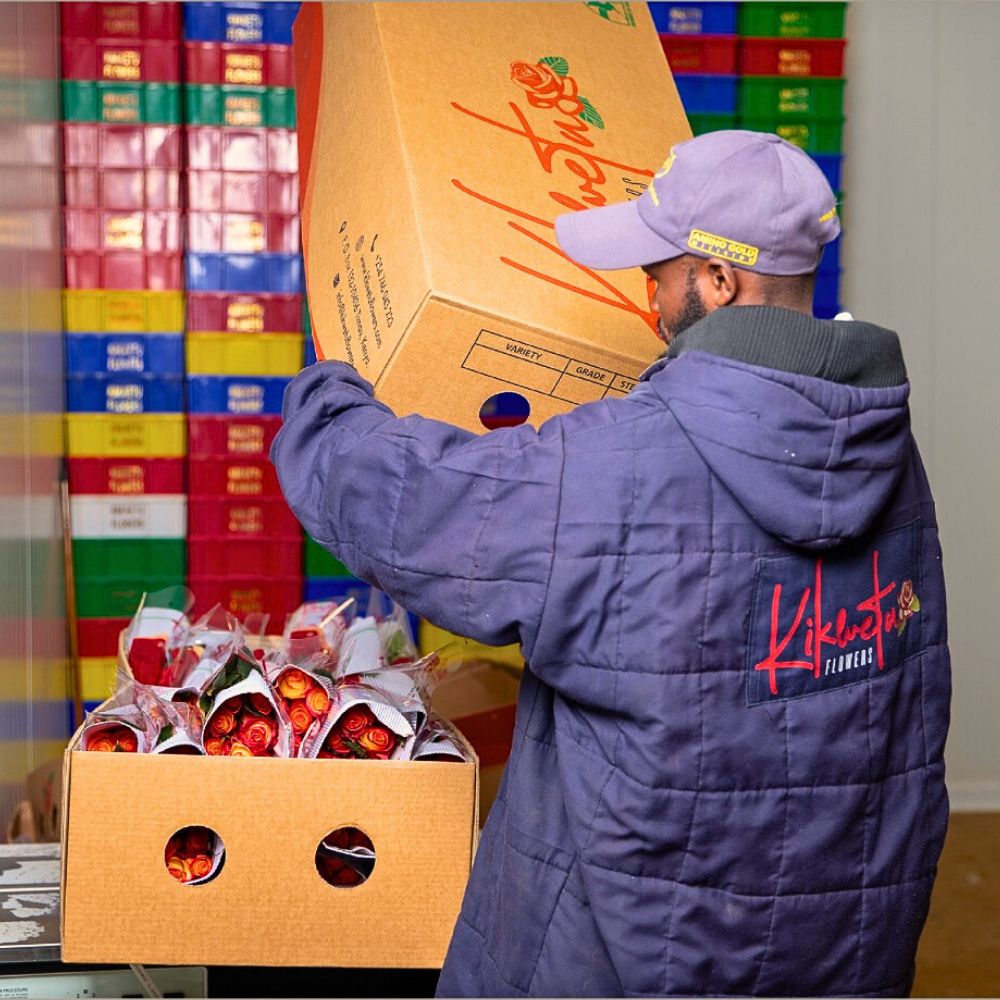
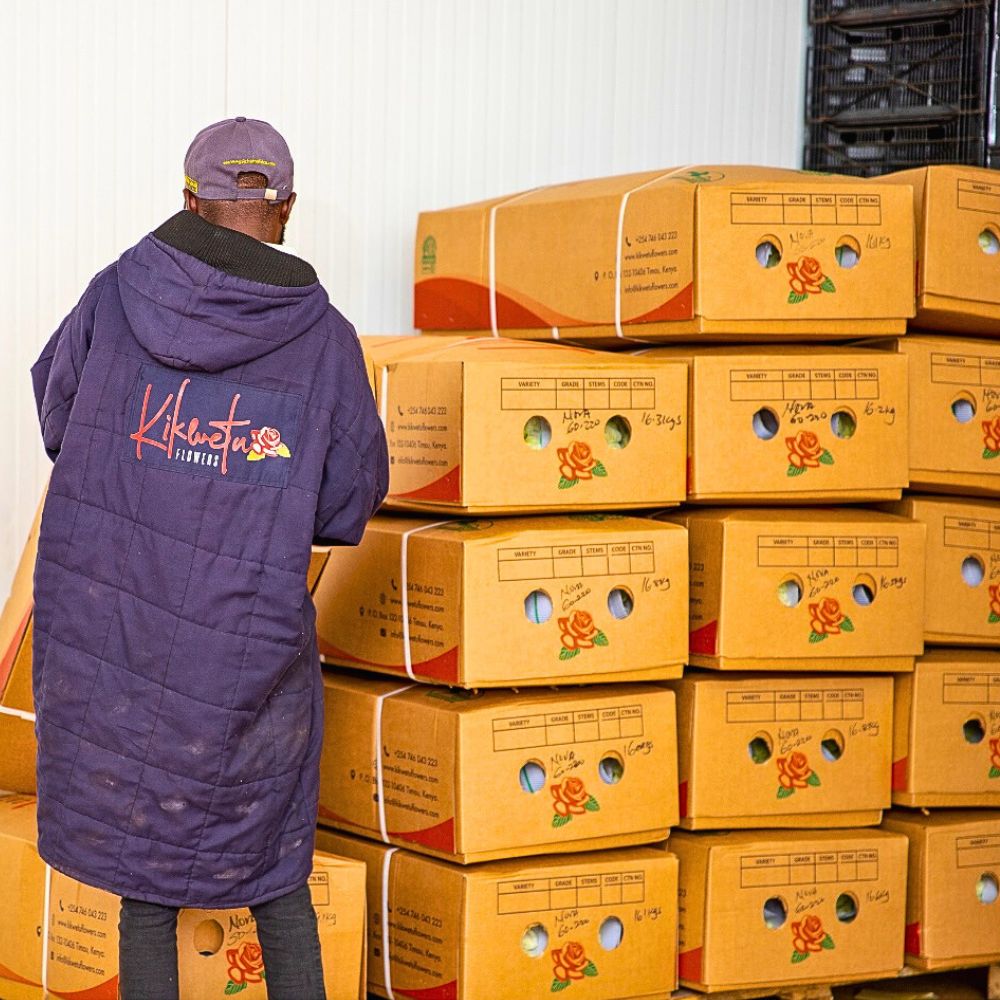
Cut flowers, a significant part of the floriculture industry, require packaging, and refrigeration after harvest to ensure freshness during transportation, storage, and delivery. These processes, alongside air freighting and trucking, are energy-intensive and contribute to a significant carbon footprint. Imported flowers, in particular, require processes like dipping in fungicides to comply with import regulations, further exposing workers, water, and land to chemicals.
Those in the industry keen on sustainable practices are, therefore, minimizing waste and landfilled debris by choosing reusable, recyclable, or compostable packaging solutions like vases and containers, avoiding plastic decor, and opting for recyclable, minimal packaging. The move towards sustainable packaging, they rightly so believe, not only reduces environmental impact but also improves resource efficiency and enhances the overall sustainability of the flower industry.
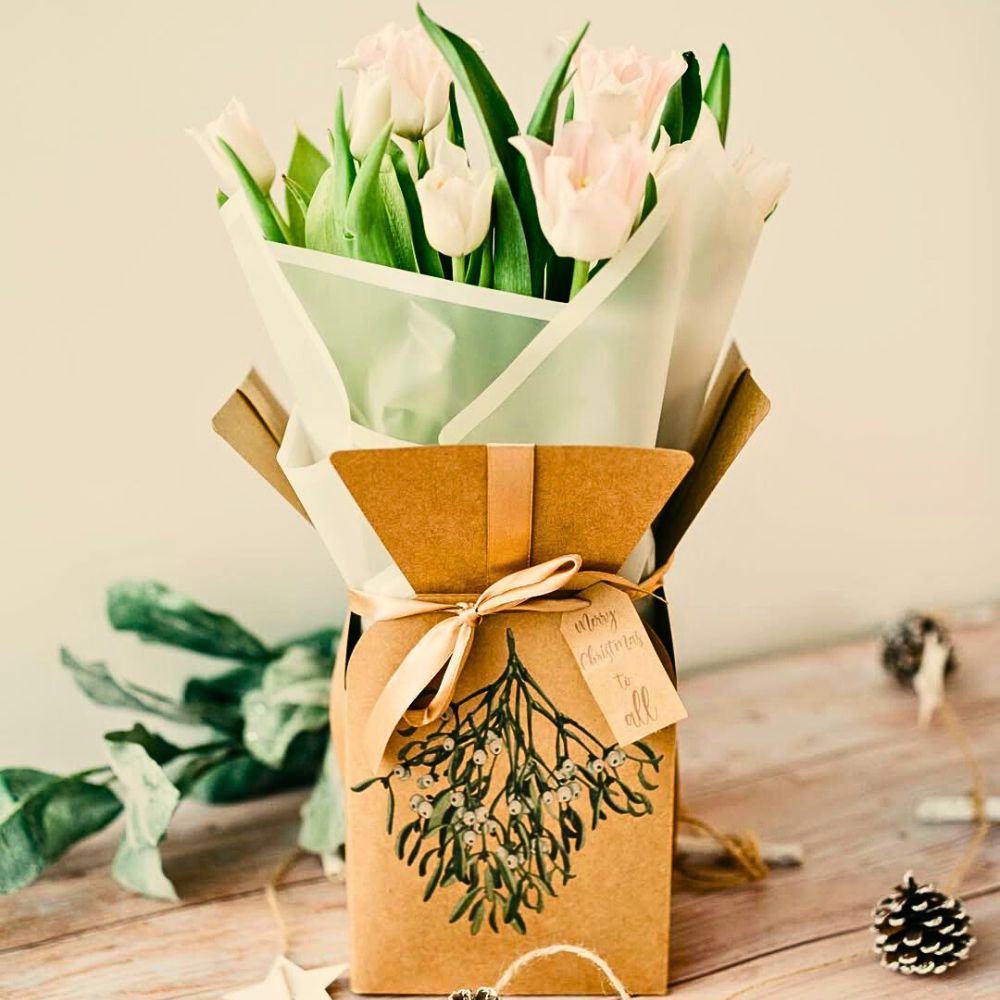
Why Sustainable Packaging Should Be Encouraged in the Floriculture Industry
The adoption of sustainable packaging in the flower industry offers several benefits. These packaging materials, for starters, reduce landfill waste, plastic pollution, and carbon emissions. For instance, replacing plastic sleeves with compostable alternatives could prevent millions of tons of non-recyclable waste annually. Sustainable packaging in the flower industry, therefore, addresses the issue of plastic pollution by using biodegradable materials that break down into organic components.
Furthermore, sustainable packaging makes use of renewable resources including materials from plants like corn, sugarcane, and potatoes. Plus, biodegradable materials like mycelium foam also enrich soil health, closing the loop in circular systems. It, also, enhances economic resilience, in that while initial costs may be higher, sustainable packaging offers long-term savings. Reusable crates lower replacement expenses, and compostable materials avoid landfill fees. Numerous brands have, as a result, reported increased customer loyalty after switching to eco-friendly packaging.
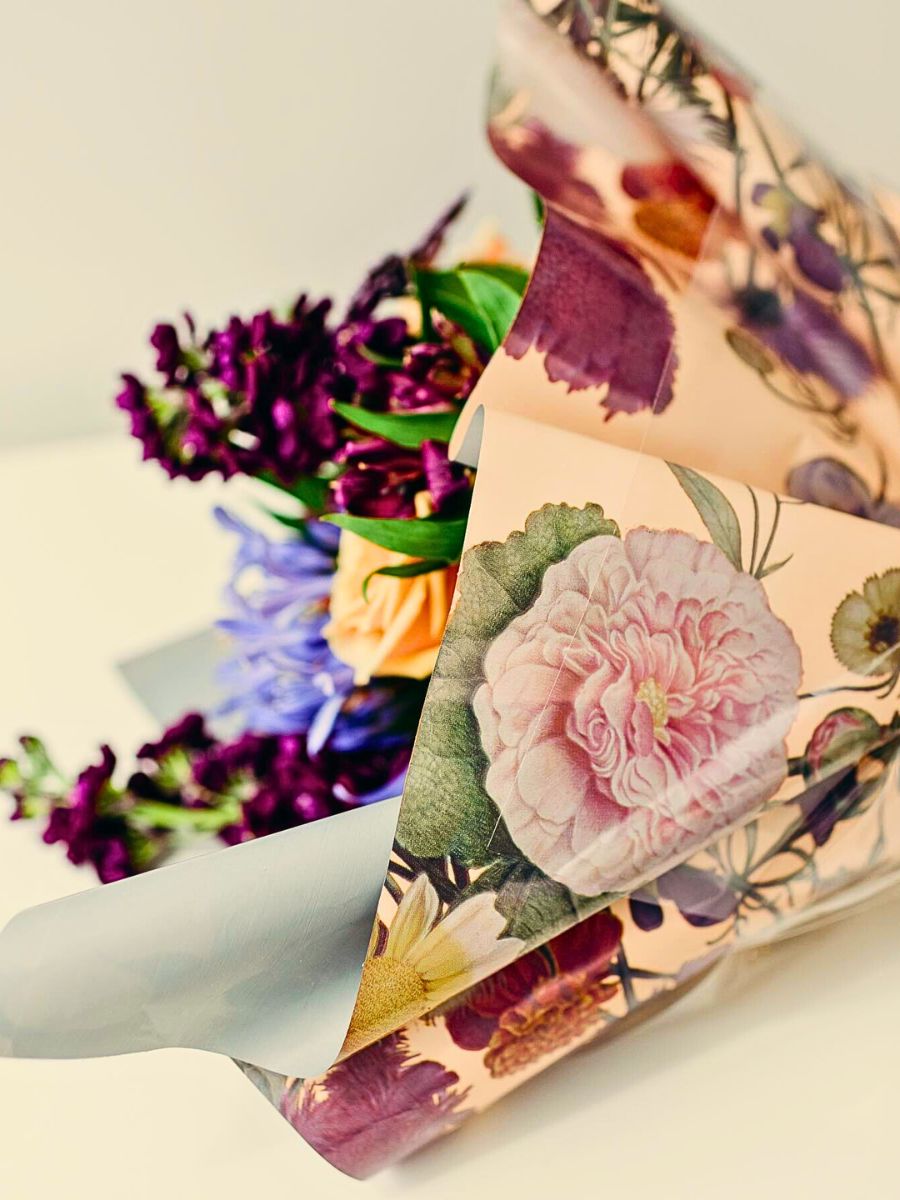
What is more, governments are tightening plastic regulations with policies such as those enshrined in the EU’s Single-Use Plastics Directive, as well as Kenya’s Plastic Action Plan which advocates for the use of biodegradable alternatives. Proactive adoption, in this case, helps those in the flower industry avoid penalties and maintain market access.
There is, also, the consumer demand aspect. A 2019 Nielsen survey infers that 73% of global consumers prefer brands with sustainable practices. Also, ecological consciousness influences consumer choices. Adopting sustainable packaging can enhance brand image and build consumer loyalty. Those in the flower industry adopting eco-friendly packaging, therefore, stand to attract dedicated eco-conscious buyers willing to pay premiums for ethically produced, sourced, and packaged flowers.
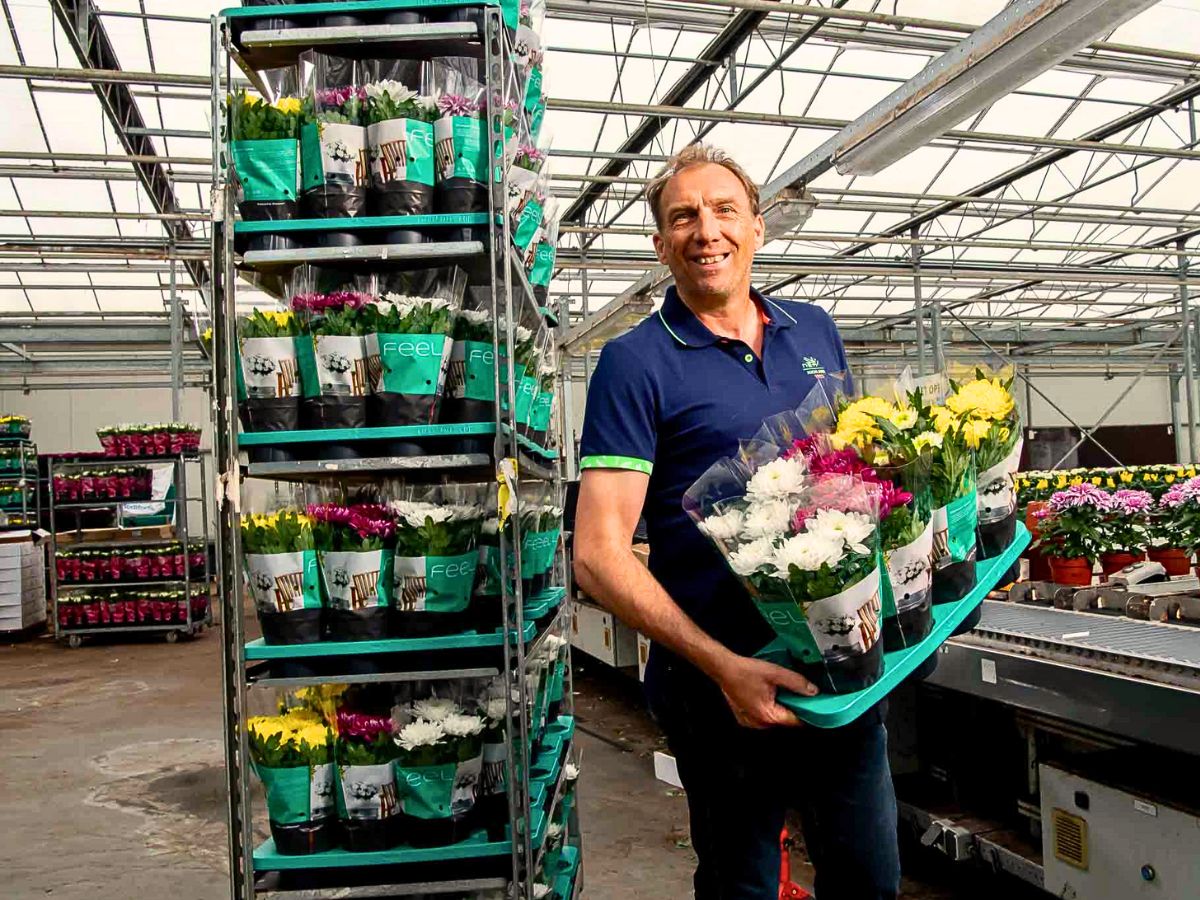
Moreover, sustainable packaging often supports marginalized communities. Some initiatives create employment for local communities, while others such as plant-based material sourcing, promote agroforestry. Such ethical practices enhance brand reputation and align with the United Nations (U.N) Sustainable Development Goals (SDGs).
Some Sustainable Packaging Innovations
The industry response to the need for sustainable packaging solutions has been quick and innovative. There have been several intentional sustainable packaging strategies emerging. From circular plastic solutions to compostable hydration sleeves and mushroom-based cushioning materials, sustainable packaging innovations have in the past several years been developing across the flower supply chain driven by factors like consumer demand, regulatory pressures, and genuine environmental commitment. And, essentially, these emergent innovations offer more viable solutions.
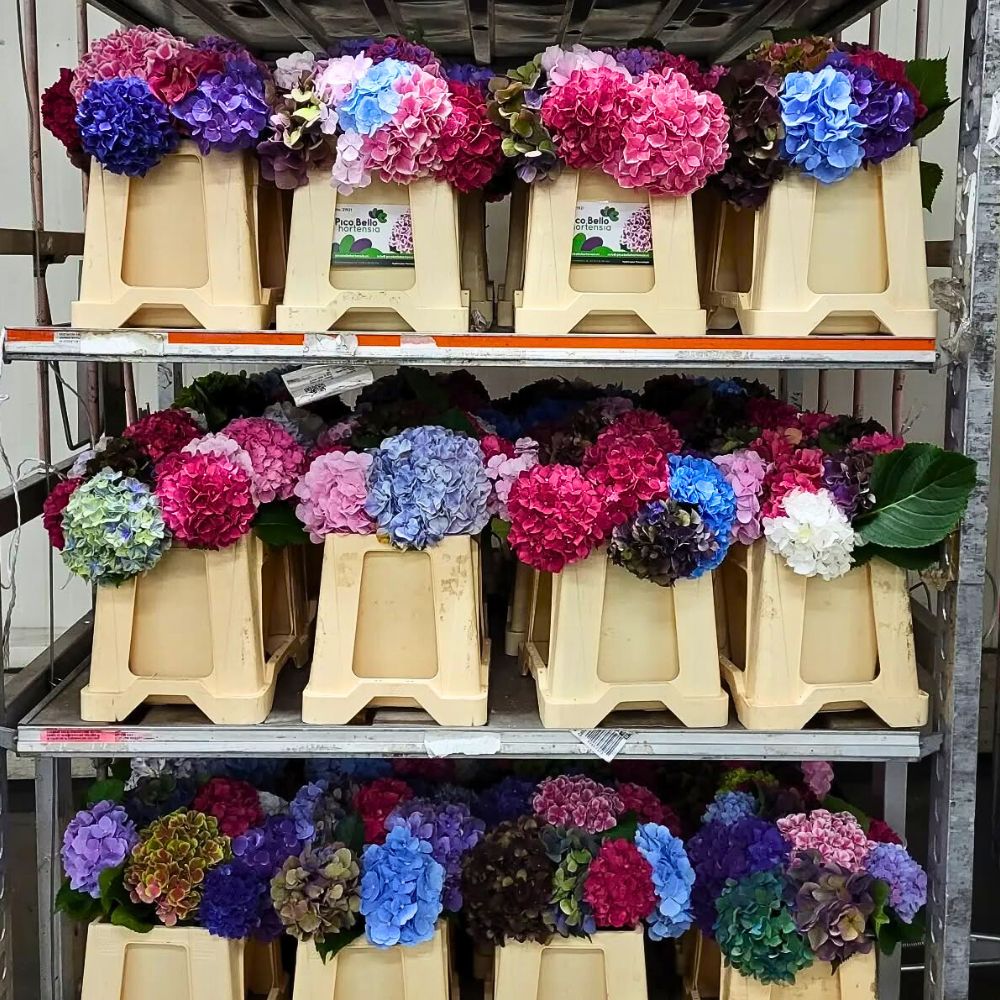
For starters, there are biodegradable alternatives that break down naturally, reducing the landfill burden. In this context, compostable cellulose-based wraps, derived from wood pulp or agricultural waste, are increasingly becoming popular, and come in varied alternatives. Numerous flower exporters, for instance, use alternatives like Chrysal's Arrive Alive® Eco wrap. This eco-friendly and innovative flower packaging preserves the condition of cut flowers during transport.
The flower wrap and bag are made from renewable resources and are fully compostable. While in use, they create micro-environments that maintain 95% humidity for up to 120 hours, reducing water usage by 40% compared to traditional wet packaging. The material decomposes within 12 weeks in industrial composting facilities, a stark improvement over conventional plastic sleeves that require hundreds of years to break down.
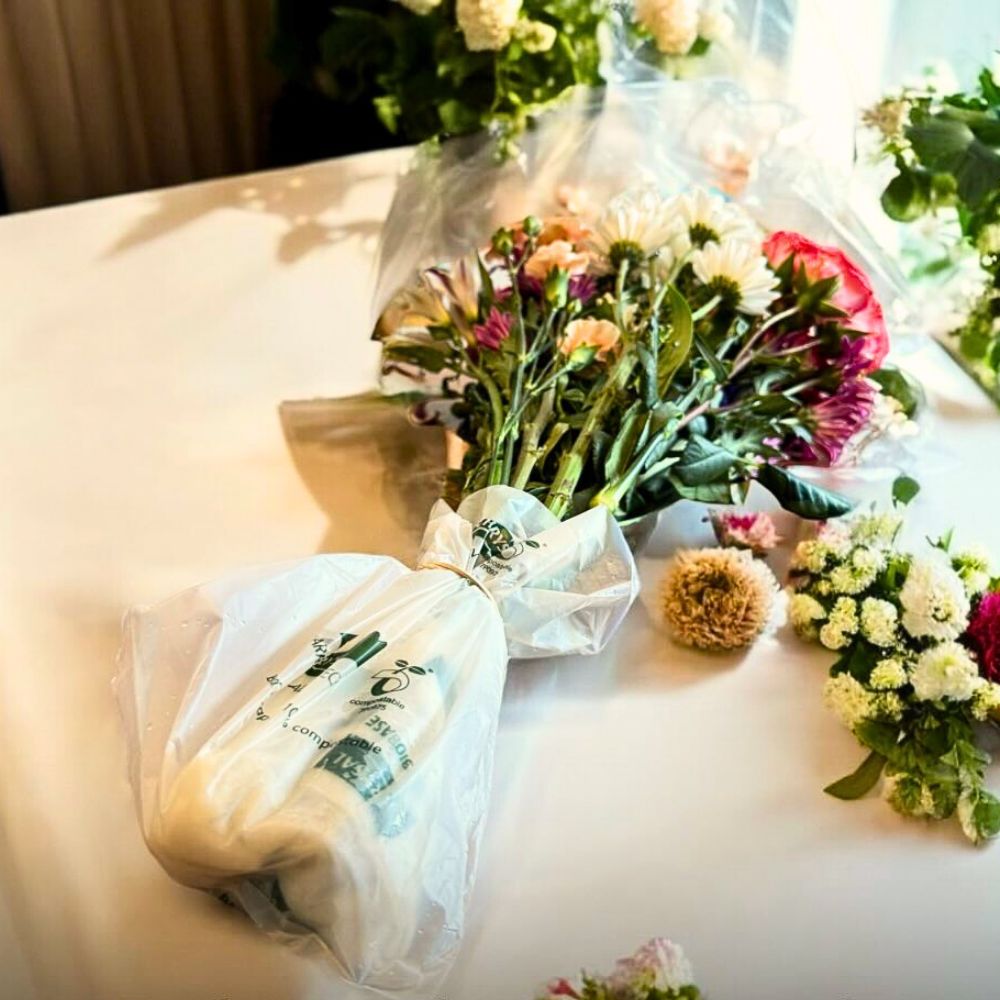
Algae-based packaging, derived from a rapidly renewable resource, is also biodegradable and compostable, providing a potential replacement for plastics. For example, mushroom packaging, grown from mycelium on agricultural waste, offers a strong, biodegradable, and custom-moldable alternative. Companies like Ecovative Design, for instance, grow mycelium into durable, biodegradable foam that enriches soil after disposal. This innovation is fast gaining traction for use in the floral industry.
New York-based Ecovative Design partnered with floral wholesalers to replace plastic foam blocks with Grow.bio™ mushroom root packaging. This USDA-certified bio-based material grows in roughly seven days using agricultural waste. It provides comparable impact protection and decomposes in home gardens within a month. Early adopters noted a significant decline in their packaging waste through this switch.
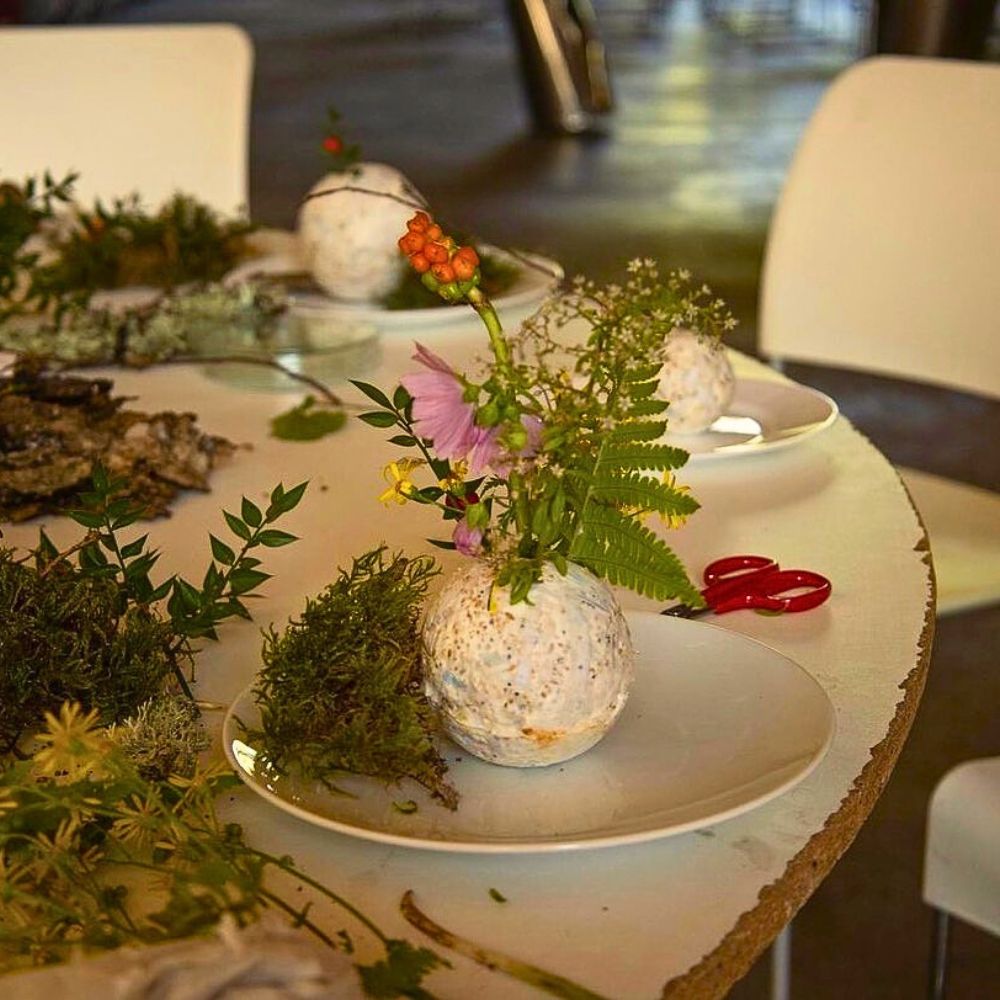
There are, also, compostable bioplastics, derived from renewable resources such as corn starch or sugarcane, which offer a promising alternative to conventional plastics. These materials can be molded into various shapes suitable for containers, sleeves, and wraps, providing comparable protection to traditional plastics. Their key advantage lies in their ability to decompose naturally in industrial composting facilities, diverting waste from landfills and reducing reliance on petroleum-based plastics.
However, verifying the composability assertions with certifications like those from the Biodegradable Products Institute (BPI) is crucial to ensure they break down effectively under appropriate conditions. Also, oftentimes, the cost of bioplastics can be higher than conventional plastics, thus a potential hurdle to widespread adoption.
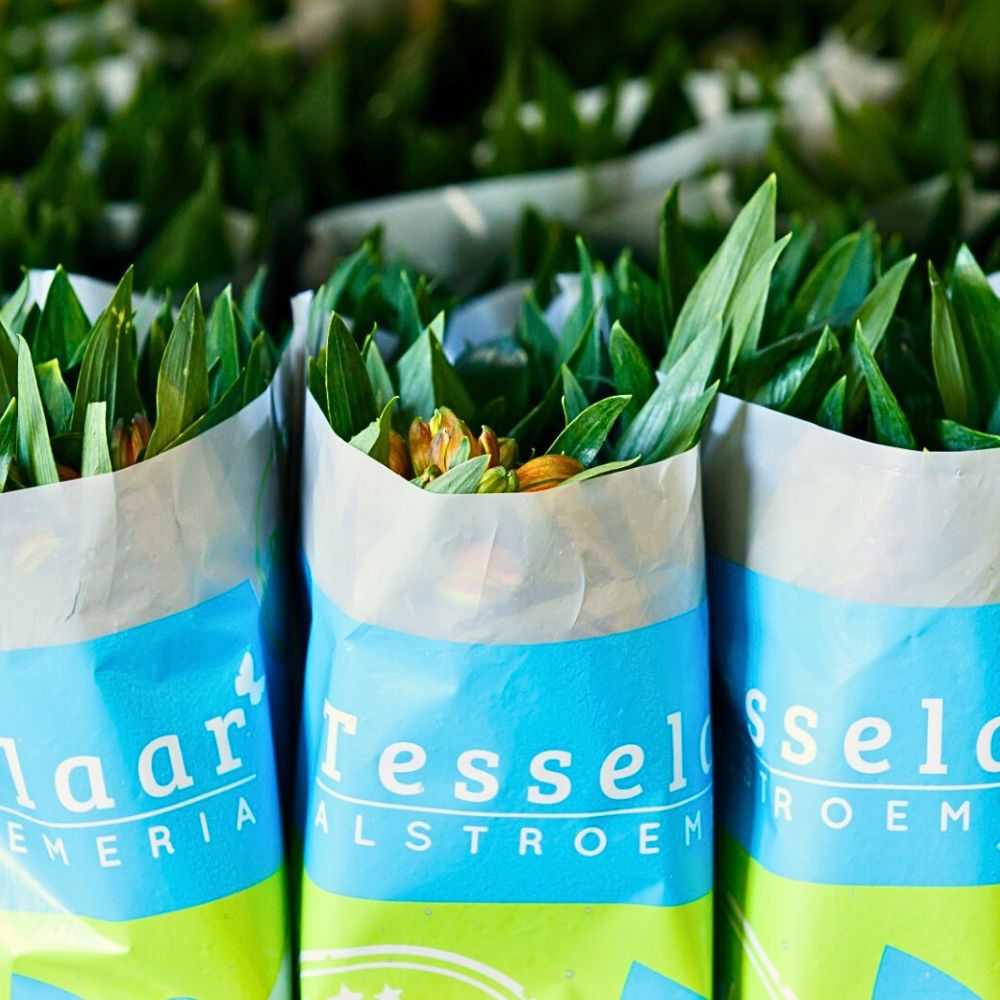
Based in Luttelgeest, in the Dutch province of Flevoland, grower Tesselaar Alstroemeria, keen on sustainable practices has also started using unique 100% recycled plastic sleeves for their flowers. According to Karolien Tesselaar, these sleeves are essential in that other than enhancing the sustainability aspect, they also protect the flowers they are used for, against damage, especially during transport.
Karolien Tesselaar:
“Our sleeve protects our flowers against damage during transport but is removed fairly quickly by the florists or consumers. It’s just a shame that we use new material for that. We came into contact with Global Pack through our supplier Mertens. Global Pack is part of Koninklijke Paardekooper Group, which in turn is a member of the Circular Plastics Alliance. We were faced with the choice to switch to 100% recycled plastic. Despite the many developments in the packaging industry, we are a bit of a pioneer”.
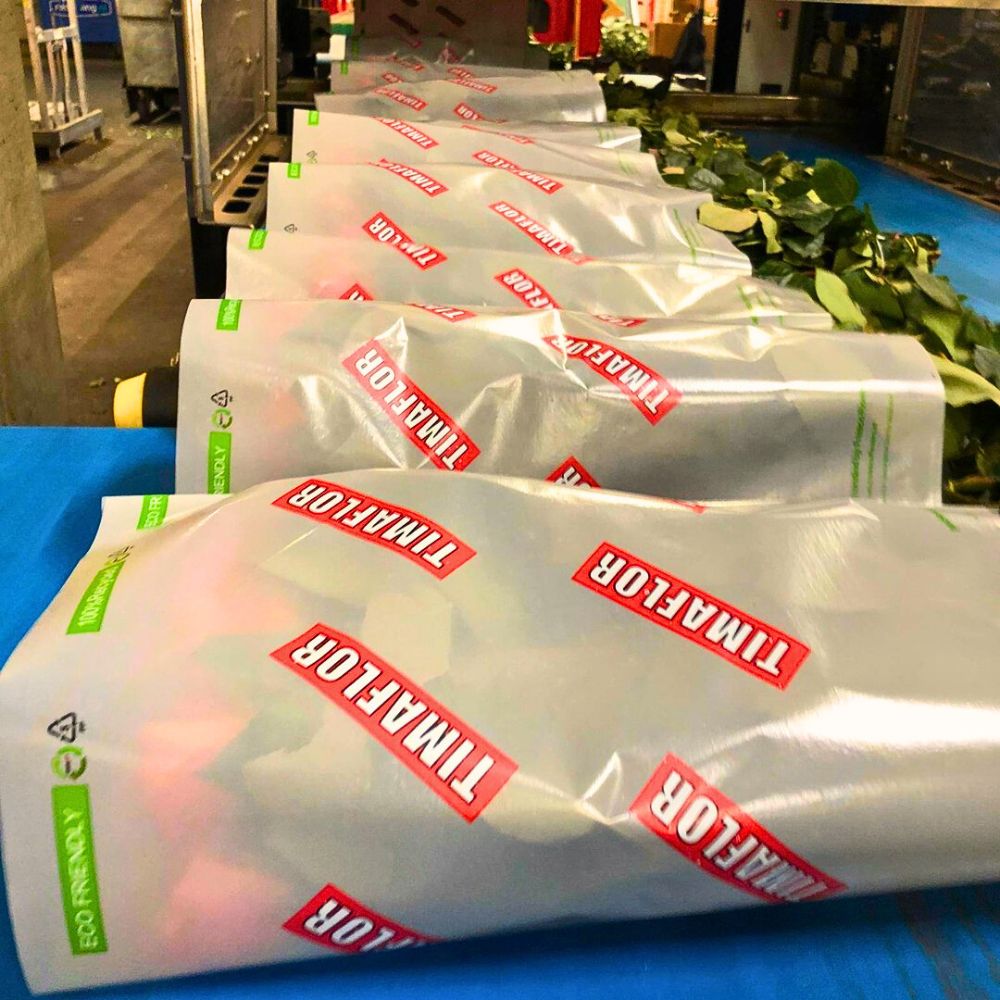
Circular Plastics, a company committed to 100% recycling of single-use materials, has also developed different sustainable circular packaging and transport solutions that make an impressive contribution to floriculture ecology, or the CO2 footprint. These products reduce environmental impact and the single use of scarce resources. From innovative flower boxes to recycled plastic pallets, pallet boxes, collection products, floral packaging film, recycled labels, and numerous others, the goal is to deliver sustainable products that provide closed-loop solutions.
Dutch packaging innovator Plascon, for a case in point, developed the BioFlex film which is derived from cassava and corn starch, achieving up to 49% biodegradation within several days under landfill conditions. These transparent sheets protect delicate petals during shipping while withstanding 85% relative humidity—critical for tropical flower exports. Colombian rose growers, for instance, reported fewer damaged blooms when switching to these plant-based films compared to petroleum-based alternatives.
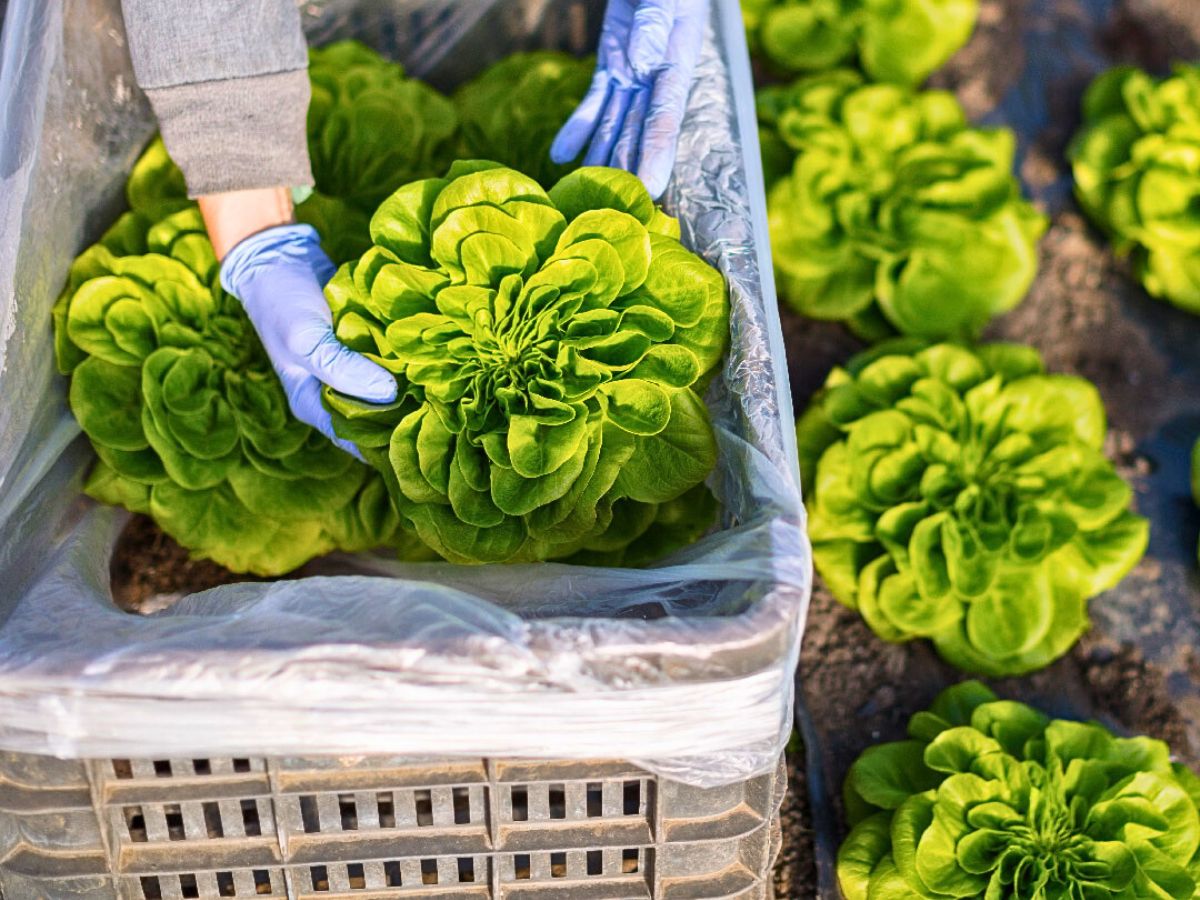
Even More Sustainable Floriculture Packaging Options
Recycled paper and cardboard, as well, remain key in sustainable flower packaging. These materials’ widespread availability, versatility, and relatively low cost make them attractive options for traditional boxes, sleeves, and wrapping. Using post-consumer recycled content significantly reduces the demand for virgin materials, conserving forests and lowering energy consumption. Furthermore, the printing process can be optimized using water-based inks, minimizing the release of volatile organic compounds (VOCs) and reducing air pollution.
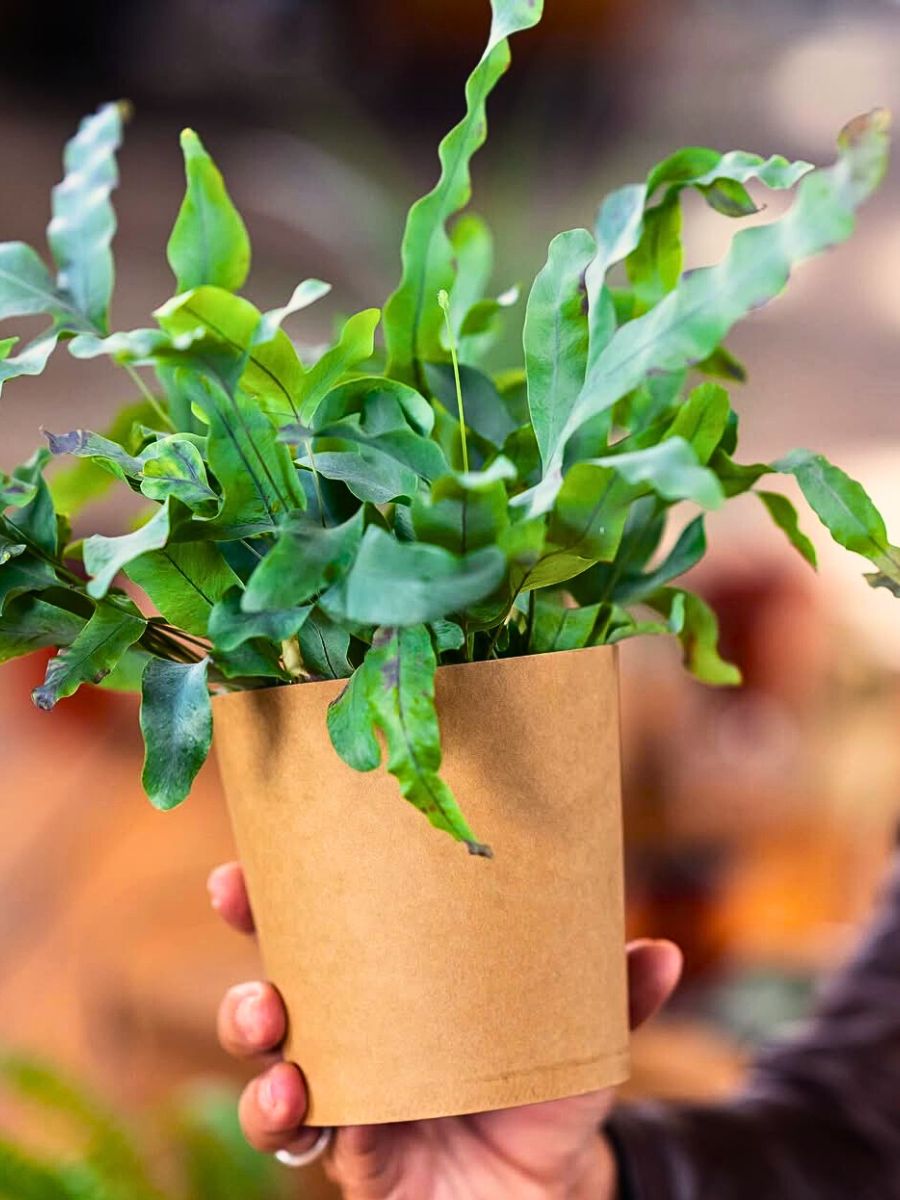
Certification by organizations like the Forest Stewardship Council (FSC) ensures responsible sourcing and sustainable forestry practices. However, inherent limitations of paper and cardboard regarding moisture resistance need to be considered, especially for delicate flowers or in humid conditions.
Reusable containers, such as glass vases or ceramic pots exemplify the principles of the circular economy. They are durable and can be returned to retailers for refilling or reused by the consumer for various purposes. Applying a deposit-refund system can motivate customers to return containers, promoting circularity and significantly reducing waste. While offering excellent sustainability, the initial investment in reusable containers and the logistics of collection and cleaning can be challenging. The weight and fragility of glass containers also need to be considered during transportation.
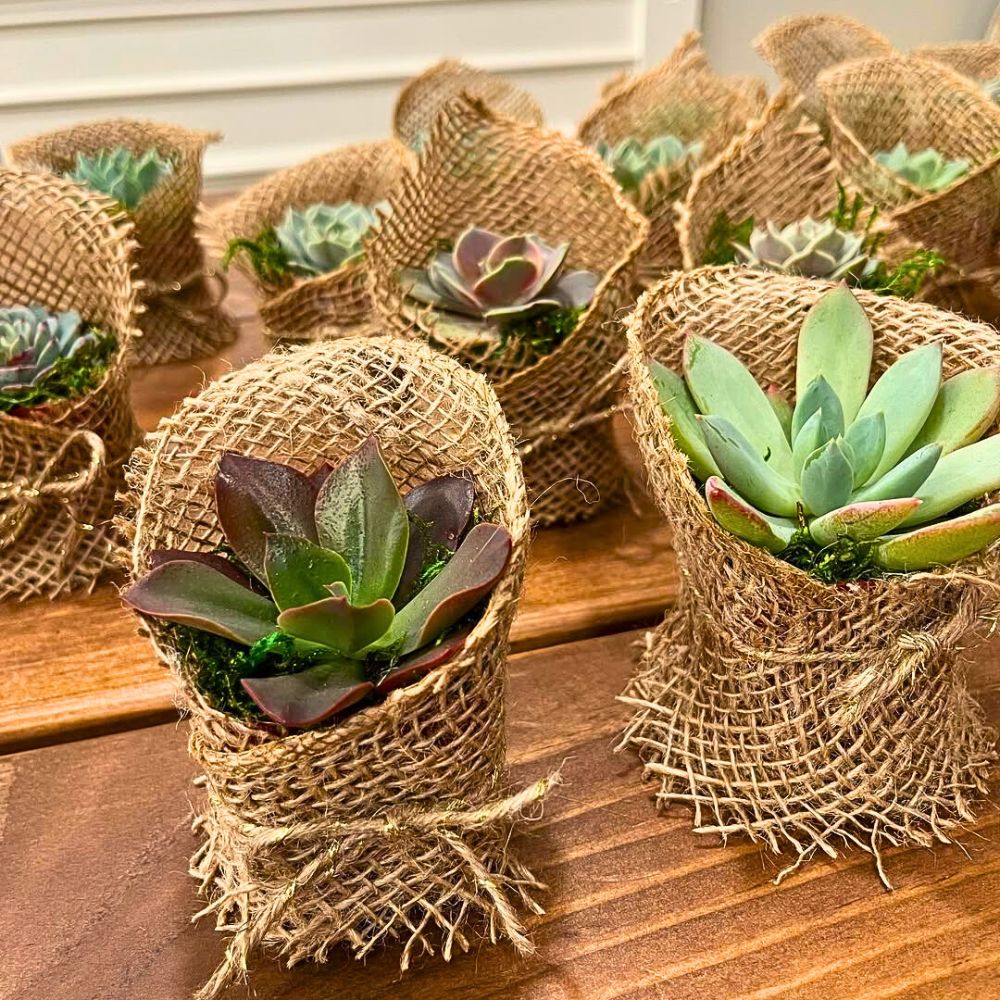
Natural fabrics like burlap, cotton, and linen, similarly, provide biodegradable alternatives for packaging or decorating flowers. These materials offer a rustic, eco-friendly aesthetic, appealing to environmentally conscious consumers. Then again, sourcing these materials from sustainable farms and ensuring the use of natural, non-toxic dyes are essential to minimizing their environmental impact. Imperatively, the adoption of sustainable packaging in the floriculture industry requires a manifold approach. Hardly any single solution suitably fits all applications. It all depends on factors like cost, performance requirements, infrastructure availability, and consumer preferences. Combining different sustainable materials and solutions means the floriculture industry can meaningfully reduce its environmental impact, enhance its image, and build a more sustainable future.
Featured image by Decorum, and header image by @thefloristwrapshop.

